Microsoft's KIN: A Eulogy
by Brian Klug on July 13, 2010 3:42 PM EST- Posted in
- Smartphones
- Microsoft
- KIN
- Mobile
The Failure of KIN
But we all know the way this story ends - Microsoft killed the KIN.
They're not entirely dead yet, however - Verizon is still selling both the KIN ONE and TWO for $29.99 and $49.99 on contract, respectively, and Amazon is selling both KIN for $0.01. They'll keep selling until Verizon has burned through its inventory. Though launch in Europe has been completely canned, there are just under 10,000 of the KINs in the US that will continue to demand support. The real uncertainty now for KIN is whether Microsoft plans to make good on its previously promised mid summer software update.
But let's look at what really did the KIN in.
Priced like a Smartphone
For starters, the devices lacked a realistic pricing structure - despite not quite being a smartphone, Verizon priced the data plans for the KIN as if they were, at $29.99 per month. There's since been discussion that Verizon originally intended heavily reduced pricing for the KINs, but soured on the deal when Microsoft delayed release. At the right price, the KINs could have been a compelling alternative to the dying breed of featurephones. It's hard to argue that there isn't a niche that the KIN could have filled at the bottom, yet above boring featurephones. At $10 per month or less for data, the KIN would've been a much more successful sell.
Though they were billed as being attractive for children and teens, the KIN's monthly plans ended up being just as hard to swallow as any other smartphone. It just didn't make sense to buy something that wasn't quite a smartphone, yet cost just as much monthly. Next to aggressively subsidized Android devices that deliver full featured smartphone experiences, the KIN just didn't make sense when buying the handset either. Pricing aside, the KIN did have a number of other notable and ultimately fatal flaws.
Social Integration
For such a strong social networking oriented device, there's a lot that the KINs left desired with regards to all the different social media platforms it tied into. First and foremost was Twitter integration.
As shipped, the devices treat Twitter more like a one-way feed of information. You can post simple updates with text, but cannot tweet and attach photos, geotags, videos, audio recordings, or other media. To be honest, the way Twitter was integrated felt hacked on at the last minute, like Microsoft discovered the API to pull down your timeline, post updates, but ran out of time to do anything more. You can't retweet, reply (without doing it manually), view conversations, search, direct message, view your replies, or anything more. It's basic to the point of being beyond barebones. Further, while social data from Facebook and Myspace makes it into contact cards, Twitter profiles inexplicably don't sync to contacts.
There's also the weird and uncertain way that certain social data takes precedence over other social data. For example, avatars come down from Facebook, but not from Twitter.
The next confusing bit was Facebook. I think there are two extremes to Facebook integration into a platform - integrate too much, and Facebook becomes so much a part of the OS that you can't find it anymore because it's everywhere. This is how the KINs integrated faceboook; it's a part of the OS in every nook and cranny. It's in the contacts pages, in the home screen, and in all the avatars. There's no dedicated Facebook application because it's everywhere, alongside data from all the other social media sources that you're prompted to log into during setup. The downside is that there's no specific place to get just Facebook information, instead, it's scattered throughout the OS.
At the other extreme is the iOS approach, which keeps Facebook sequestered away in an application of its own, requiring you to dive into contact information and users pages through that portal rather than through the OS' contacts pages. It's easier to understand at first, but ultimately you're left managing two disparate sets of information.
In between is the Palm Pre and Android approach, which aggregates all the data in a KIN like fashion, but still provides a standalone application for everything else. Ultimately, I believe this is the sweet spot. Data that can be mashed up and aggregated into contact fields should be, but there are some things that just don't map to other parts of the phone's UI. For example, status updates and wall posts are presented in a rather nebulous fashion in the KIN "loop" homescreen, alongside other info. Things like photo albums on Facebook, notes, events, and messages - they don't have any mapping into the KIN OS. Instead, you just do without them. And no, browsing online doesn't count.
The result was that I was left consuming whatever Facebook information was tossed my way, but completely missed all my notifications, wall posts, events, and friend requests. The KIN keeps you tied into the news feed, sure, but people need more. For a completely social phone, I found consuming social media a relatively confusing experience.
Social Beings need Calendars and Maps
That brings me to what else was lacking that was rather glaring - a calendar. With the right execution, the KIN could have perfectly integrated the Facebook event calendar, invitations, and exchange or Google calendars. Instead, the KIN has absolutely no planning tools or event notifications.
It's a glaring reminder of the rift that exists between smartphones and featurephones, and a testament to how many features we take for granted on modern smartphone platforms. But it wasn't a part of KIN.
Same for maps. The KIN both included aGPS support and geotagging for photos, yet there was no bundled Bing maps application.
Communications
The Danger Hiptops famously included instant messaging support for all the major protocols when they arrived on the smartphone scene in 2002. It's hard to fathom, then, how the KIN lacks instant messaging suppor a whole 8 years later. In fact, the KIN seems like a step backwards from the Sidekicks in a few regards. Social networks are beginning to implement their own instant message protocols, namely Facebook. Microsoft and Verizon were rumored to be releasing a mid summer update that would include instant messaging support and a number of other important lacking features, but that's all up in the air right now.
Moving on, the KIN email client was basic, but lacked attachment support for almost all document formats. PDF, Word, Excel, Power Point, and OneNote documents were all unsupported. In fact, the KIN couldn't open BMP, GIF, TIF, or MP3s as attachments either. Essentially all the KIN could open were videos (WMV, MP4, 3GP, 3G2) and photos that are JPG or PNG. The email client also lacked native HTML viewing, and spell check support.
That brings me to the keyboard assists - there were none. Though both KIN had spectacularly good keyboards, they were hampered by the lack of any autocorrection, capitalization after punctuation, or spell check. It literally amounted to just the keyboard. That's fine for most things, but for pecking out emails on the device, assists are extremely useful. Generation upload might not be the best at grammar, but Microsoft could've at least helped everyone along with some auto capitalization.
Phone for Kids?
Though the KIN was aggressively marketed towards the younger demographic, it surprisingly lacked a feature parents demand in large numbers. Namely, Parental controls. In fact, I came close to suggesting the KIN to a close friend of mine for their son, before it occurred to me that a lack of parental controls made the device something the parents would never swallow. It's that kind of glaring omission that makes the KIN a tough sell.
Lack of Applications
But the real problem with the KIN was that Microsoft was launching a new phone platform in 2010 without any application marketplace - it didn't make sense.
Microsoft promised application support eventually, and even suggested that Windows Phone 7's marketplace would eventually merge with the KIN's. Of course, the reality is that the KIN had no future in a WP7 dominated roadmap.
Browser
The KIN's browser felt speedier than Internet Explorer on Windows Mobile ever felt, but still feels an order of magnitude slower than any other mobile browser. Though all of the sites I visit on a regular basis render perfectly, the KIN web browser did abysmally poorly at all the browser standards tests:



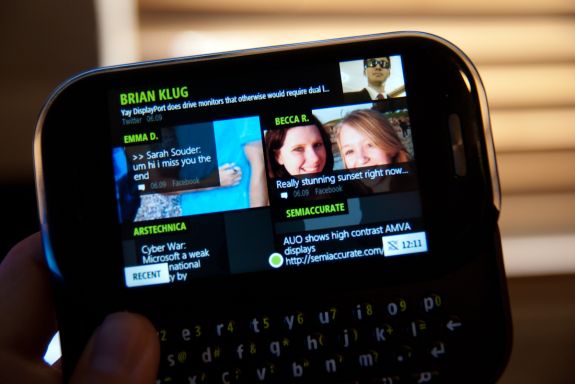
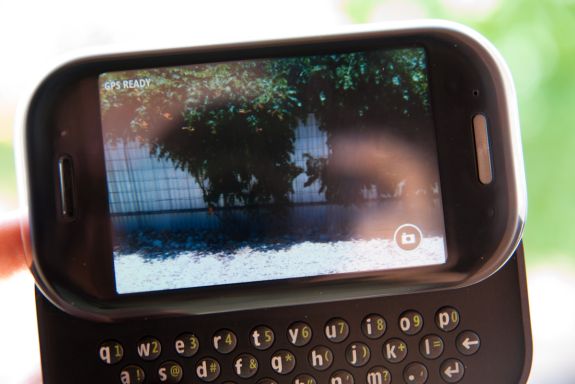
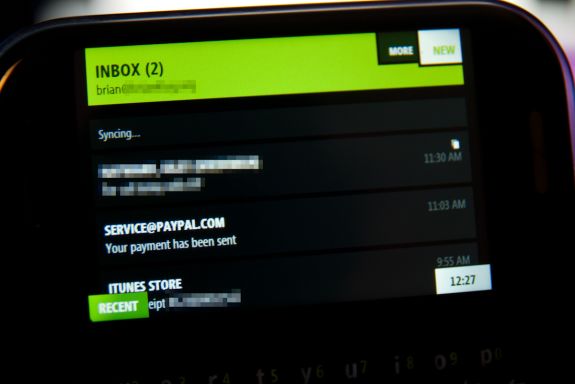
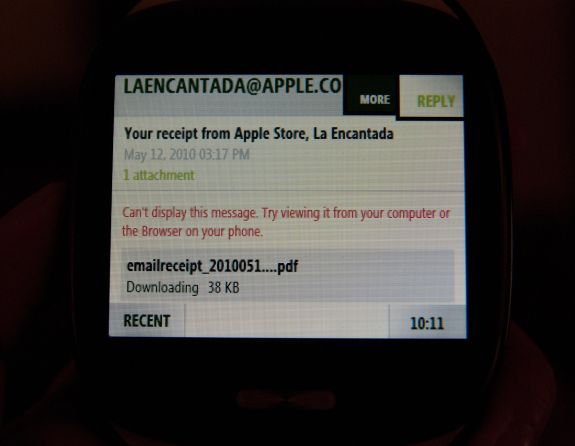
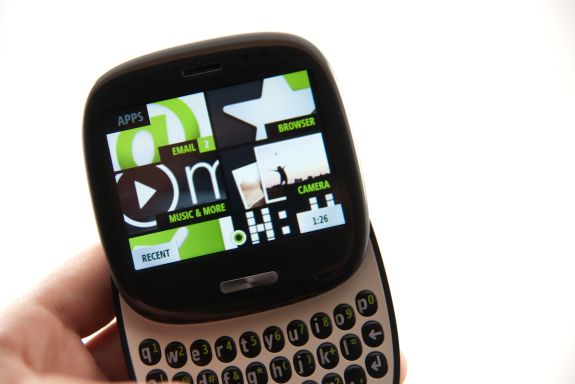
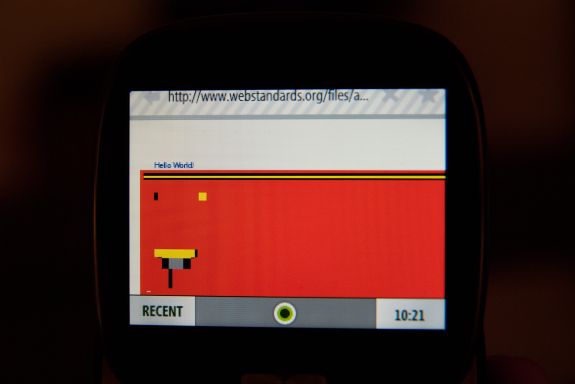
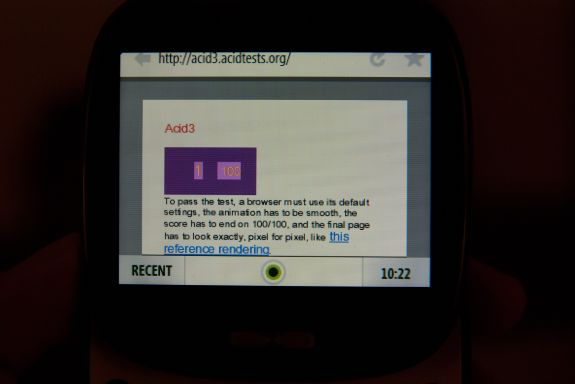














60 Comments
View All Comments
Brentcsi101 - Tuesday, July 13, 2010 - link
someone saying "Droid X" anyone?? But come on... between Android and iOS, there is nothing right now that can compete with them.Diesel Donkey - Tuesday, July 13, 2010 - link
You must have never used a Palm Pre or Pixi.mrjminer - Tuesday, July 13, 2010 - link
Yea, I was going to get a Palm Pre... but the cost of the required plan was far more than what I'm willing to spend for a cell phone. I ended up going on Craigslist and getting someone to transfer their SERO plan over to me for $75. Can't really beat $35 a month (after taxes) for 450 minutes, unlimited texting, and unlimited data -- I can deal with using a Palm Treo Pro in the meantime.As for the Kin, I really like the form factor of the smaller one. However, it will be tough to decide between WebOS and Windows 7 Mobile, assuming HP actually continues development on WebOS.
Stuka87 - Wednesday, July 14, 2010 - link
Why would anybody buy a phone from a company that no longer exist?mrjminer - Thursday, July 15, 2010 - link
..... "assuming HP actually continues development on WebOS."inspire - Friday, July 16, 2010 - link
Palm exists today just as much as Mobil does.mcnabney - Wednesday, July 14, 2010 - link
The WebOS devices have fallen into the same category as the Kin. A nice try, but too little and too late. If the Pre had come out on schedule (two years ago!) they would have kept in the race and likely not have been acquired by HP.aebiv - Tuesday, July 13, 2010 - link
Amazing how everyone is so quick to forget the most flexible and powerful mobile OS, Windows Mobile. Yes, Android comes close, but the roadmap for 3.0 doesn't look good locking down the UI more. Battery life? Why is it my HD2 with a smaller battery gets better battery life than the EVO? They're virtually the same phone hardware wise, just a difference in mobile OS.sprockkets - Tuesday, July 13, 2010 - link
"Amazing how everyone is so quick to forget the most flexible and powerful mobile OS, Windows Mobile."We forgot about it when the iphone and even others at the time made us realize how horrible it was to use.
Only thing keeping WM alive before ver 7 is HTC and their skin.
aebiv - Wednesday, July 14, 2010 - link
Horrible it was to use?How was it horrible?
Quit making generalizations and give some points.